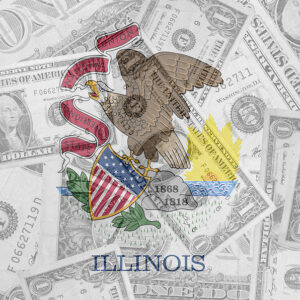When Illinois passed a law capping interest rates on certain kinds of loans, the goal was to protect low-income borrowers. But a new report found the unintended consequence was to deny those borrowers access to the funds they need.
A new paper from Tom Miller Jr. Ph.D., professor of Consumer Finance at Mississippi State University, found Illinois’ new rate cap law led to decreased access to credit and harmed consumers’ financial well-being.
In 2021, Miller reported, Illinois imposed an all-in interest-rate cap of 36 percent per year for loans under $40,000 from non-bank and non-credit-union lenders. The result?
“We found the interest-rate cap decreased the number of loans to subprime borrowers by 44 percent and increased the average loan size to subprime borrowers by 40 percent,” Miller said. “The Illinois interest-rate cap of 36 percent significantly decreased the availability of small-dollar credit, particularly to subprime borrowers, and worsened the financial well-being of many consumers.”
The study compared credit bureau data between Illinois and neighboring Missouri, a state without any legislated interest-rate cap, to estimate the effects of Illinois’ rate cap on unsecured installment loans.
“We do not talk about payday lenders in this paper, as payday lenders do not or cannot report to traditional credit bureaus,” Miller pointed out during a press call. “We just studied one particular credit product: An unsecured installment loan. But our main findings are that subprime borrowers lost loans, and this is a significant impact on consumers with low Vantage scores.”
A subprime borrower is someone with a Vantage credit score below 600. A borrower with a Vantage credit score over 650 is classified by Miller as a prime borrower. Meanwhile, unsecured installment loans are loans a person can take based on their creditworthiness and their promise to repay. Collateral is not required.
Data conducted by a survey from the Online Lenders Alliance was also used in Miller’s report.
“About 44 percent of the respondents indicated that their financial well-being had declined as a result of the rate cap and this survey was conducted nine months following the imposition of the rate cap,” said Miller. “And 60 percent of the survey respondents said they could not borrow the necessary funds they needed since the law went into effect.”
When the rate cap was signed into law, Gov. J.B. Pritzker (D-Ill.) and others called it historic.
“Hundreds of community groups, civil rights organizations, faith leaders, and others joined the Legislative Black Caucus in pushing for the historic reform,” Lisa Stifler, director of state policy at the Center for Responsible Lending said in a statement.
Pritzker said the law, formally known as the Predatory Loan Prevention Act, would substantially restrict any entity from making usurious loans to consumers in Illinois.
“This reform offers substantial protections to the low-income communities so often targeted by these predatory exchanges,” said Pritzker. But as Miller’s research found, the biggest impact was to deny would-be borrowers access to the funds they needed.
Miller said he believes people and politicians can work together on a solution.
“In 1916, a model legislation was formed called the Uniform Small Loan Law and that was a collaboration between activists and capitalists. They said, ‘How can we get together to provide small-dollar, affordable loans to people,’ that is how can we combat illegal loan sharks,” Miller explained. “The progressives and the capitalists worked together to solve consumer problems.”
The collaboration set the rates at 36 percent per year and promised to reexamine them after a reasonable time had passed. Today, more than 100 years later, seems like a reasonable time to Miller.
“Costs today have risen but the revenue from a loan with a 36 percent interest rate remains the same,” said Miller. “How do lenders respond? They make larger loans because larger loans generate more income, and over time, lenders have found that once they could make money off a $200 loan at 36 percent in 1916, but today their break-even loan size is more than $2,500 at the same rate.”
That raises the question, ‘Where do people go for loans if they need $1,000?’
“Those people are shut out of this installment loan product,” said Miller, who recommends more research be done on the subject to bring about more findings.
Joining Miller on the research was J. Brandon Bolen, assistant professor of economics at Mississippi College, as well as Gregory Elliehausen with the Board of Governors of the Federal Reserve System.

